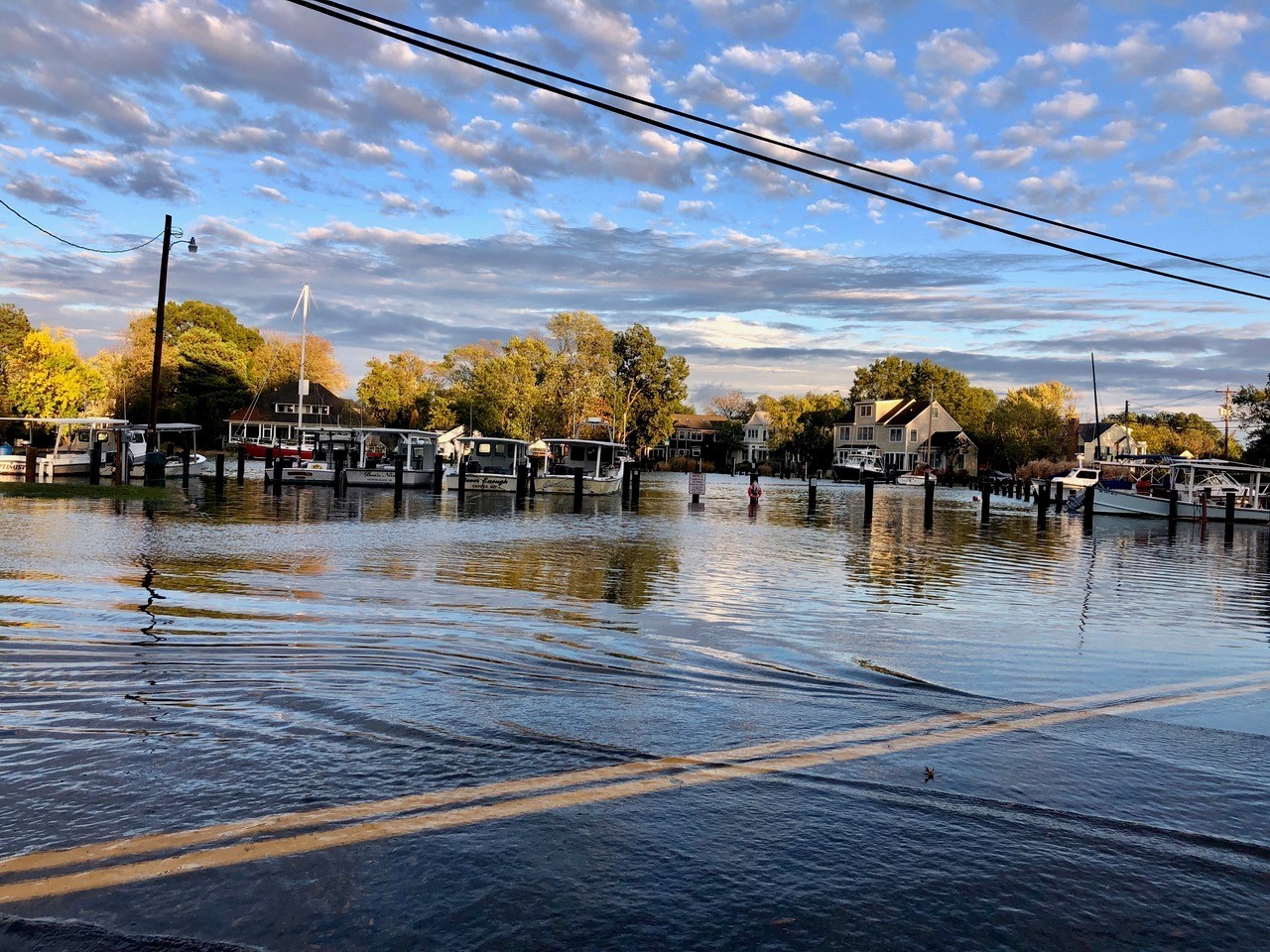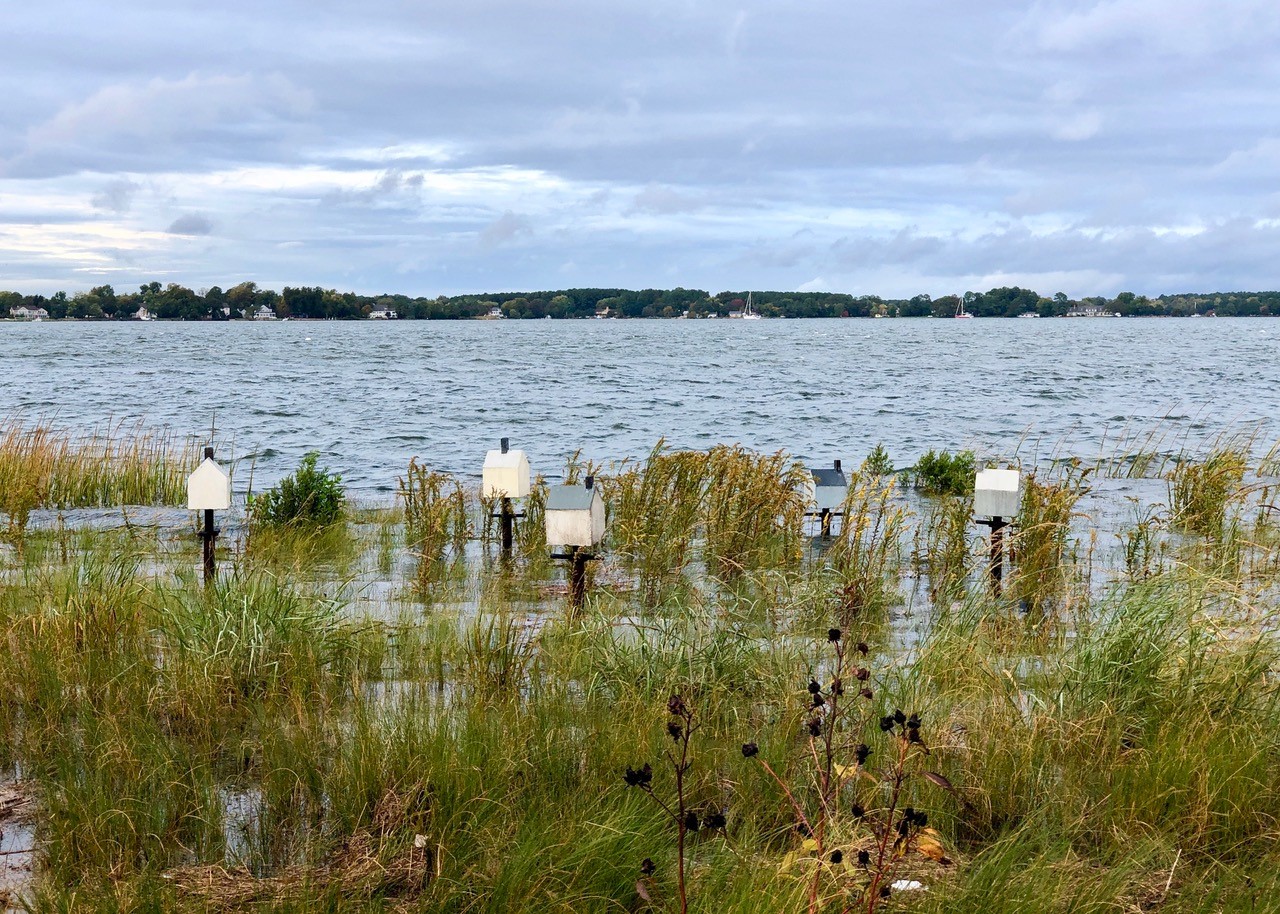We have much more to do and your continued support is needed now more than ever.
An Interview with Cheryl Lewis, Town Manager of Oxford, Maryland
Interview conducted by James Duffy, Jennifer Parkos, and Amanda Poskaitis

Cheryl Lewis is the town manager of Oxford, a town of about 650 residents on Maryland’s Eastern Shore. With over 300 years of history, Oxford is one of Maryland’s oldest towns. But today, it’s threatened by flooding that increasingly threatens vital town infrastructure and amenities. To address these threats, National Wildlife Federation has partnered with Oxford to implement living shorelines, innovative living breakwaters, and protective dunes, with groundbreaking taking place this fall.
Cheryl’s leadership as a local partner has been critical to this project’s success. In this interview, National Wildlife Federation staff spoke with Cheryl about the challenges facing small coastal towns like Oxford, the value of partnership with National Wildlife Federation, and her unique insights on coastal resilience as a local official.
Can you tell us a little bit about the town of Oxford?
Oxford is an incredibly historic place. It’s a 300-plus-year-old community, and it was historically an important port town, when it was one of just two ports in Maryland that initially accepted ships from overseas. What’s fairly unique about it today is that it retains a lot of its historic visibility. We do have some newer sections of town, but unlike a lot of places, it consists of a fairly large historic district within a very small town.
Oxford is also essentially a low-lying peninsula. We have roads that are as low as 2-foot base flood elevation, and I think our highest point might be between 12- and 14-foot base flood elevation. So, it’s a very low property. For that reason, when we first started looking at building coastal resilience ten years ago, we proposed it as: “Listen, we’ve been here for over 300 years. How can we make sure that we’re here for 300 more?”
Can you tell us the story of your professional role in Oxford? How did you come to be town manager?
I was hired as town manager back in 2012. I come from a business management background originally, and I first started working with local governments through a nonprofit circuit rider program that provided managerial support to small towns. That was when I first noticed that my skillset was a missing link in a lot of the places I worked with, and the reason why I entered local government.
When I first started working in Oxford, I certainly didn’t imagine I would be working in emergency management or coastal resilience! I was here from a business management perspective. It wasn’t until I got into the job that I realized something was a little different here. You know, you try to come into work one day, and there’s water halfway across the entrance to town!
That leads into our next question. Can you give us a bit of background on the challenges Oxford is facing with coastal flooding and what this fall’s restoration work hopes to accomplish for the town?
Oxford deals with both stormwater flooding and tidal flooding. Even without a storm element, we have days when tidal or wind-driven flooding alone is causing us problems. The north end of town, where this fall’s work is taking place, is reached by an unprotected road with unprotected electric, water, and sewer infrastructure. At best, that road is separated from the water by two or three feet of grass, and at worst, nothing at all. With a breach of that area, transportation in or out of the north end is very difficult, and we have an island of residents that’s essentially stranded.
The living shoreline and breakwaters will give us the ability to push the land out a little bit, and offer a little more resilience to the wave action and the type of destructive tidal water that would eat into that infrastructure. The dunes, too, provide an added level of protection for our onshore infrastructure.

As you mentioned, the work happening in Oxford uses nature-based solutions, like living breakwaters and dune creation. As town manager, was it challenging to get residents of Oxford on board with these techniques over more traditional approaches?
Challenges always exist. You have people that are fine with a nature-based approach, and just as many who say something like a sea wall would work a lot better. And sure, a sea wall might work well under some circumstances, in some places. But there are things we need in Oxford that hardened infrastructure like that just wouldn’t provide—first and foremost, protection of our public beach.
In Oxford, our public beach is very important to us. It’s one of the few public beaches in the area, and also 300-and-some-years-old. We actually have local legislation about this beach that’s something like the second or third law ever written in the town. So it’s important to our history, important to our residents, and important to our tourism that this public beach be maintained. These nature-based approaches, much more so than a sea wall, allow us to do that while still building our coastal resilience.
I also think that, because this site is so high profile and has so much public access, this living shoreline will serve as an example of how resilience projects can protect infrastructure while enhancing public access. Because our town is so highly visited, anyone can come here, look at our projects, and be able to utilize these techniques elsewhere.
What is the value of partnership with National Wildlife Federation to your work on the Oxford coastal resilience and shoreline enhancement project? What kinds of obstacles exist to this work in Oxford that partnerships like ours help to overcome?
This project is time consuming and overwhelming, and I am just me! You know, I have a staff member that answers the phones and handles billing, and I have another that handles building permits and planning. The rest of it is all me. So, for me—for Oxford—to be able to pull off these resilience projects, get them funded, and make them actually happen, it’s all really dependent on the support of National Wildlife Federation’s team. As we were getting this project off the ground, any time something was getting left behind or falling off the deep end, somebody like Amanda [National Wildlife Federation’s Mid-Atlantic Coastal Resilience Program Manager] would go “Hey, we need to do this next.” And without that, I don’t think we would have been that successful, because at times my job is totally overwhelming.
National Wildlife Federation has also helped piece together all these different pots of money to make this project possible. You can’t do a project of this size and think that one person is just going to raise their hand and go, “Oh, we’ll cover that cost.” Unfortunately, that’s just not how this work goes! So I think a big piece of this work going forward is National Wildlife Federation using its expertise to work with other communities like ours to pull the pieces of a project together. I think for us, doing that has really been a success story.
The work that we’re doing in Oxford will create valuable habitat for wildlife, as well as benefits for Oxford’s residents. Why is conservation work important to you, personally and professionally?
The health of the bay is so crucial to Oxford. As a community, we depend so heavily on our working waterfront. That includes tourism, as well as our heritage of crabbing, oystering, and fishing. We can’t have any of that if we don’t have a healthy ecosystem in the Chesapeake Bay, and we’re aware of that. And so we feel a responsibility to take care of our little thimble-full of the Bay. It might be just a thimble-full, but if everybody took responsibility for their thimble, we’d be better off. We might only be 650 or so people, but it can make a difference.






















